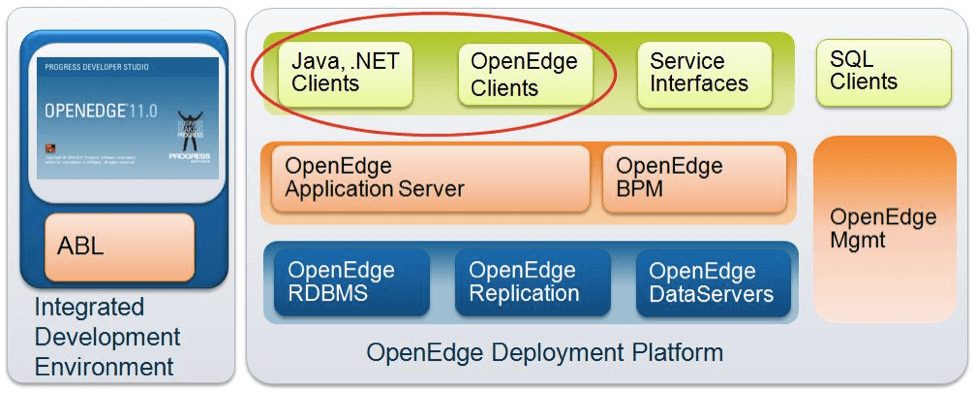Architecting for Mobility Solutions

In Part Oneof our blog around Mobility Solutions, we discussed some of the trends influencing our thinking around architecting Mobility into OpenEdge. In this short note, we’ll take it down a notch, discussing what’s available today, and what is driving architectural decisions in this space going forward.
The OpenEdge platform currently supports several approaches for enabling fundamentally different types of client access to shared business logic. In particular, OpenEdge provides comprehensive support for Java, .NET and “RIA” clients via the Open Client Toolkit.

By the way, the OpenEdge 11 Tour is a great way to familiarize oneself with what is “in the box” today.
Recent trends indicate a strong push towards Mobility Solutions which leverage the compute power, ergonomics and form factor of contemporary mobile phone and tablet devices. The BYOD trend amongst users adds “fuel to the fire” in terms of supporting an increasingly mobile workforce access to core business applications. As we extend the OpenEdge platform for Mobility Solutions, do we focus on a particular target platform e.g. Android, or should we bet on a broader, cross-platform technology such as HTML5 and potentially sacrifice the advantages of native device support ? Also, what bets should we place on wire protocols when viewing the overall architecture for OpenEdge Mobility ? Finally, one of the original core strengths of OpenEdge was speed and ease-of-use in terms of building robust business applications. How can we leverage strengths inherent to the platform for the rapid development and deployment of Mobility Solutions.
Device support - the best of both worlds ?
If we broadly categorize between
- Native Apps (Device specific e.g. iOS)
- Hybrid Apps (Device specific + HTML5/CSS/JavaScript)
- Mobile Web Apps (HTML5/CSS/JavaScript)
then a Hybrid approach seems to have a lot going for it. Interestingly, in the recent Magic Quadrant for Mobile Consumer Application Platforms issued by Gartner in late 2011, Gartner predicts that there will be a steady shift from native to hybrid and web in the mid-term. The Hybrid approach encompasses a “write-once, deploy to multiple device types” model for which intermediary-type tooling such as PhoneGap could support. Effectively, the hybrid model gives us device independence coupled with the ability to access the device-specific characteristics of the users device i.e. the best of both worlds.
Tying things together
From an “end-to-end” perspective, REST as a protocol is enjoying increasing popularity as a flexible way for connecting clients to server-side resources. Note that from an architectural perspective, “N-Tier” in the spirit of the OpenEdge Reference Architecture (OERA) is a pre-requisite with the Application Server as a key software component. This is a “call to action” for those yet to embark on OpenEdge modernization….. Equally, JSON is also a popular approach to transmitting structured data across the wire between client and server tiers.

Ah yes, the Programming Model…..
OpenEdge has always had ease-of-use and speed for the development and deployment of business applications at its core. “Abstract schemas” such as temp-tables and ProDataSets allow for flexible ways to build “views” on data irrespective of the underlying physical schema. In our current thinking and design, we are refining the notion of a “Business Entity” which encapsulates not only the logical view of the business data but also contains the business logic for manipulating the data. This model is inherently service-oriented and has ramifications for both the client (UI) and the server-side of interactions for Mobile Apps.
In a future blog, we will expand on the Programming Model and provide more insight into how things work under the hood….

